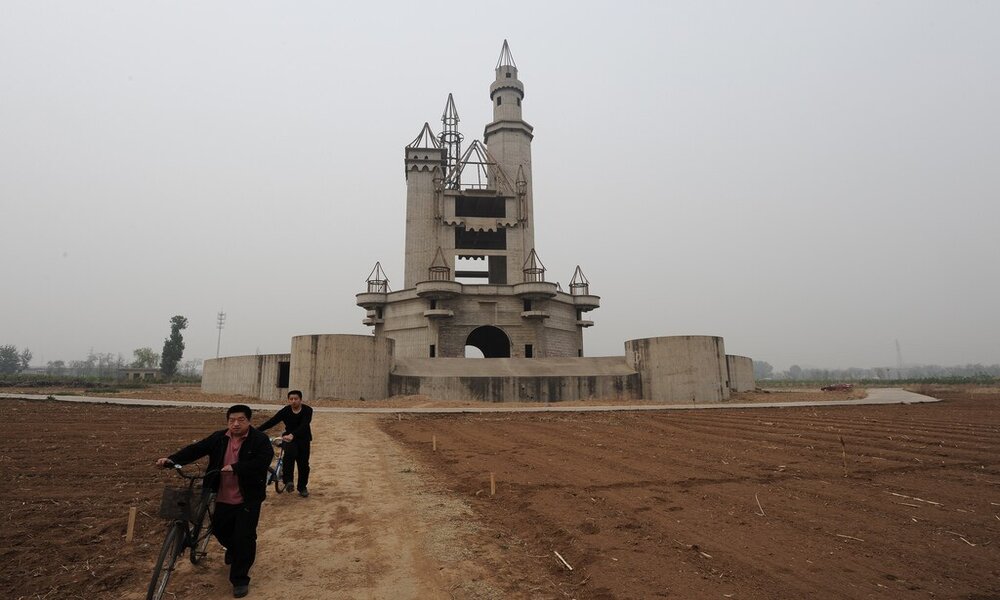About 20 miles northwest of central Beijing, deep in the in the Changping District, lies a haunting relic of ambition, mismanagement, and the complexities of China‘s real estate market: Wonderland Amusement Park. Once envisioned as Asia’s largest theme park, this sprawling 120-acre site was intended to rival the grandest parks in the world.
But it just wasn’t meant to be. Today, it stands as a surreal landscape of abandoned castles and half-built roller coasters, attracting curious adventurers and photographers rather than children or thrill-seekers.

“China’s fake Disneyland” by Josephine Lim is licensed under CC BY-ND 2.0
In 1998, the Thailand-based property developer Reignwood Group broke ground on the ambitious Wonderland project. Designed to be a spectacular escape for families across Asia, the park promised to deliver castles reminiscent of fairy tales, towering roller coasters, and state-of-the-art attractions. The vision was not just to create a theme park but to establish a landmark destination that would boost the regional economy and draw international tourism.
However, the dream came to an abrupt halt when sour disputes over land prices erupted between the developers and local farmers, stalling construction indefinitely. Local governments — often reliant on land sales to fund debt — found themselves entangled in financial challenges. By 2008, a brief attempt to revive the project fizzled out, and Wonderland was left to decay.
The unfinished structures, surrounded by overgrown fields, soon became a worrying and sad symbol of broader issues within China’s property market — a market teetering under the weight of speculative investments and uneven development practices. The story of Wonderland is a cautionary narrative about the vulnerabilities in China’s real estate-driven economic model.

“Wonderland abandoned theme-park” by Tormov Sandtorv is licensed under CC BY-SA 2.0
Despite — or, maybe, because of — its abandonment, Wonderland has become an offbeat attraction. Photographers flock to the site to capture eerie images of its skeletal castles and rusting rides silhouetted against the Beijing skyline. Local children use the space as an unconventional playground, weaving between the ruins and overgrown vegetation. The place is technically off-limits, but its creepy allure never fails to attract curious explorers, eager to admire its desolate beauty and the silence that contrasts sharply with Beijing’s bustling urban core.
You Might Also Enjoy: The Giant Buddha of Leshan, China
Reaching Wonderland is relatively straightforward. You can take a car or taxi from central Beijing, After a 20-minute trip throughout the city’s northern suburbs, you’re there. Public transportation options include buses heading toward Chenzhuang Village, though the site’s remote location may require additional walking or coordination with local drivers.
Rumors about the site’s future abound. Some suggest the land will eventually be repurposed for a shopping center, reflecting the area’s ongoing urbanization. For now, Wonderland remains a poignant symbol of unfulfilled potential and a magnet for those intrigued by its stark beauty and complex history.
Did you know about this doomed amusement park? Would you visit it on a trip to China? Tell us in our comments section below!
Featured Image: Wonderland (Abandoned Theme Park), Beijing China by Joe Wolf licensed under CC BY-ND 2.0


Leave a Reply